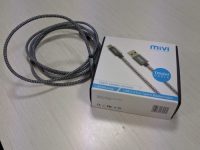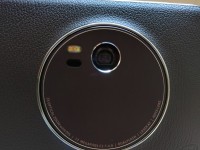If the internal IITB exhibitions rocked this year the international exhibitions were no less and pretty much upto the mark compared to the previous versions. There were many innovative and advanced technologies at display (read James Bond style technology if that helps your imagination). Ranging from nanobots to underwater robots (fishes and lobsters), from 3-D simulations of earthquakes to amazing solar powered racing cars, this year had it all.
Gwawr – The solar car
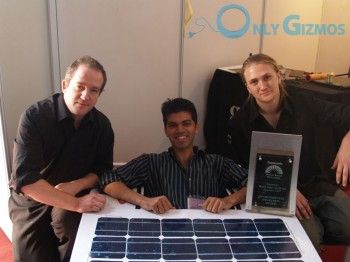
This beautiful welsh named car Gwawr meaning dawn was one of the attractions of the international exhibitions at the Techfest @IITB this year. Also, a winner of the Panasonic World Solar Challenge Environmental Awareness Award 2007 not only because it runs on green fuel but also due to the fact that most of it is made from recycled materials resulting in almost zero carbon emissions when the car is scrapped.
The car at display wasn’t the original one, but a scaled down model which was powered by electricity for now. Prof. Graham and Tom built it in 9 days for the exhibition. The actual car is a dual powered one which can be charged via both, Yeah! you guessed it, electricity and solar power. The scaled down model at the exhibition could do 25mph (because it had got Prof. Graham’s bicycle motor attached to it). The braking system was also adopted from the bicycle itself. While onlygizmos was lucky enough to get an exclusive video of Tom (future Schumacher for his sheer driving skills) driving the car. I was even more luckier to get a chance to get into the car.
Natures Raincoat
Although the name had us guessing and all we could think of was something associated with rains. But this one was something very different that we have seen for a while. On display were super hydrophobic material that repelled water as the opposites of a magnet repel each other.
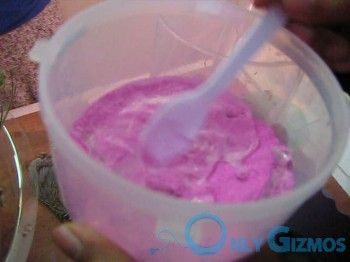
We had the magic sand at display which came out as dry as it can be in a super hot desert even after immersing in water. Then there was this special coated business card which left no traces o water even after you drop water on it. They also used a ducks wing to display the same. This phenomenon was explained by pressing a blown balloon on the surface of a bed of nails which even if you pressed hard would not be pierced by the nails and not burst. It so happens that the surface is such that pressure of the drop gets equally distributed on the surface as a result of which water does not break in to the surface and is bounced off the surface leaving it untouched by water. I know its difficult to understand but Ubercool stuff isn’t it?
Quantum of solace
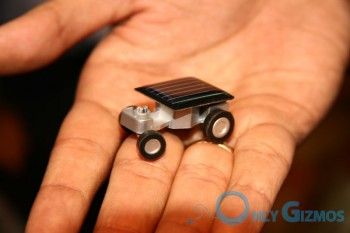
As the name suggests this was indeed an amazingly sophisticated display of state of the art technology straight out of the Bond flick. Here, on display were nano cars (and we are not referring to the Tata ones). These were extremely small minute cars which used advanced solar panels to generate energy to run these cars.
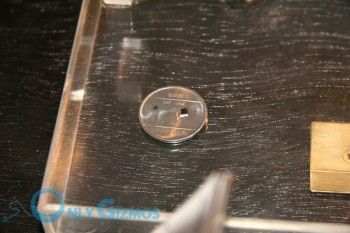
They also displayed other cool gadgets which used the solar energy to generate power.
Robotis
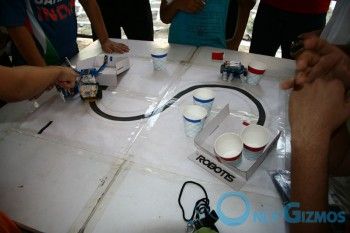
This was an interesting display by a Korean company. On display were two different kind of educational bots. First one called the Ollobot. These were small robots costing around Rs. 1500. These robots are used to learn basics of robotics. Like learning to program the robot to walk or run in a specified area and other such tasks.
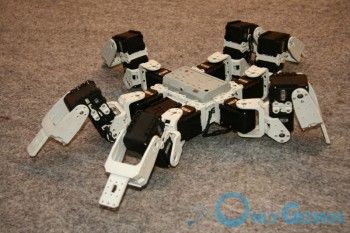
Now for more advanced learning is the kit called Bioloid. These are different, but highly advanced bots some of which are bipedal (called Humanoid) and animals (called puppy) etc and can perform various complex tasks like dancing,playing games etc. The kit costs around Rs. 40,000. Interestingly these robots also respond to sounds in the form of claps.
Besides education, these are obviously used for pure entertainment as well. I know we are at the Techfest. But still the sophisticated abilities of these small robots amazes me. Geez!
Biomimetic Underwater Robot Display
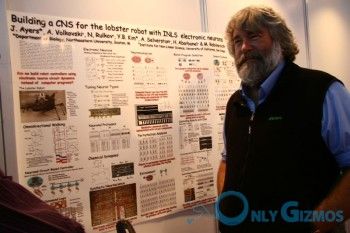
This is one of the most sophisticated robotic display that I have ever come across. Done by Dr. Joseph Ayers in association with the Nort Eastern Univ they had two underwater robots on display.
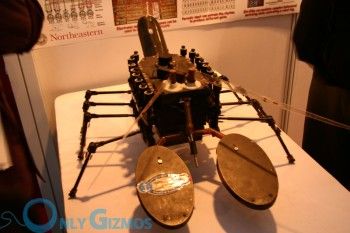
The first was an 8-legged ambulatory vehicle that is based on the lobster and is intended for autonomous remote-sensing operations in rivers and/or the littoral zone ocean bottom with robust adaptations to irregular bottom contours, current and surge.
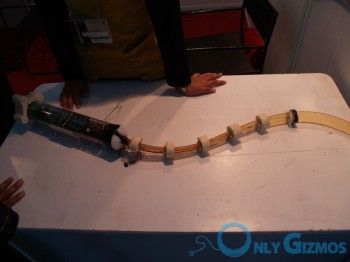
The second vehicle is an undulatory system that is based on the lamprey and is intended for remote sensing operations in the water column with robust depth/altitude control and high maneuverability.
Basically these underwater bots use neurotechnology based on the neurophysiology and behavior of animal models. These are exceptionally highly sophisticated models which will be used to carry out various operations and research on the sea bed and in the oceans.
For further details you can visit NEU website.
Naro Nautical Robot

Another underwater robot. We thought this one might be similar to the earlier amphibian bot we saw last year. But on closer inspection we realised that this bot is quite different and can swim underwater replicating the movements of fishes like Tuna, Trout or a Mackerel. This project was initially undertaken by 7 research students in Zurich, Switzerland which now has reduced to two main members viz, Cedric Siegenthaler and Jakob Buchheim. We spoke with Jakob who told us that the idea was the brain child of Cedric (team leader on this project). The whole project was completed in about a year at the end of which they had to present their thesis. Jakob also informs us that although the costing of the fish is very high. They were lucky, being research students they got most of the components from companies for free.
Although we understand that emulating the movements of fish is a difficult task, we were truly enlightened by Jakob and Cedric on this. We were told about the two main type of movements called Anguilliform and Carangiform. In Anguilliform, the whole body undergoes a wavelike movement from head to tail and backwards. Just like an eel does. And in Carangiform only the tail does the wave movements whereas the head only moves from side to side to keep the balance. You can read more about it on Naro website.

